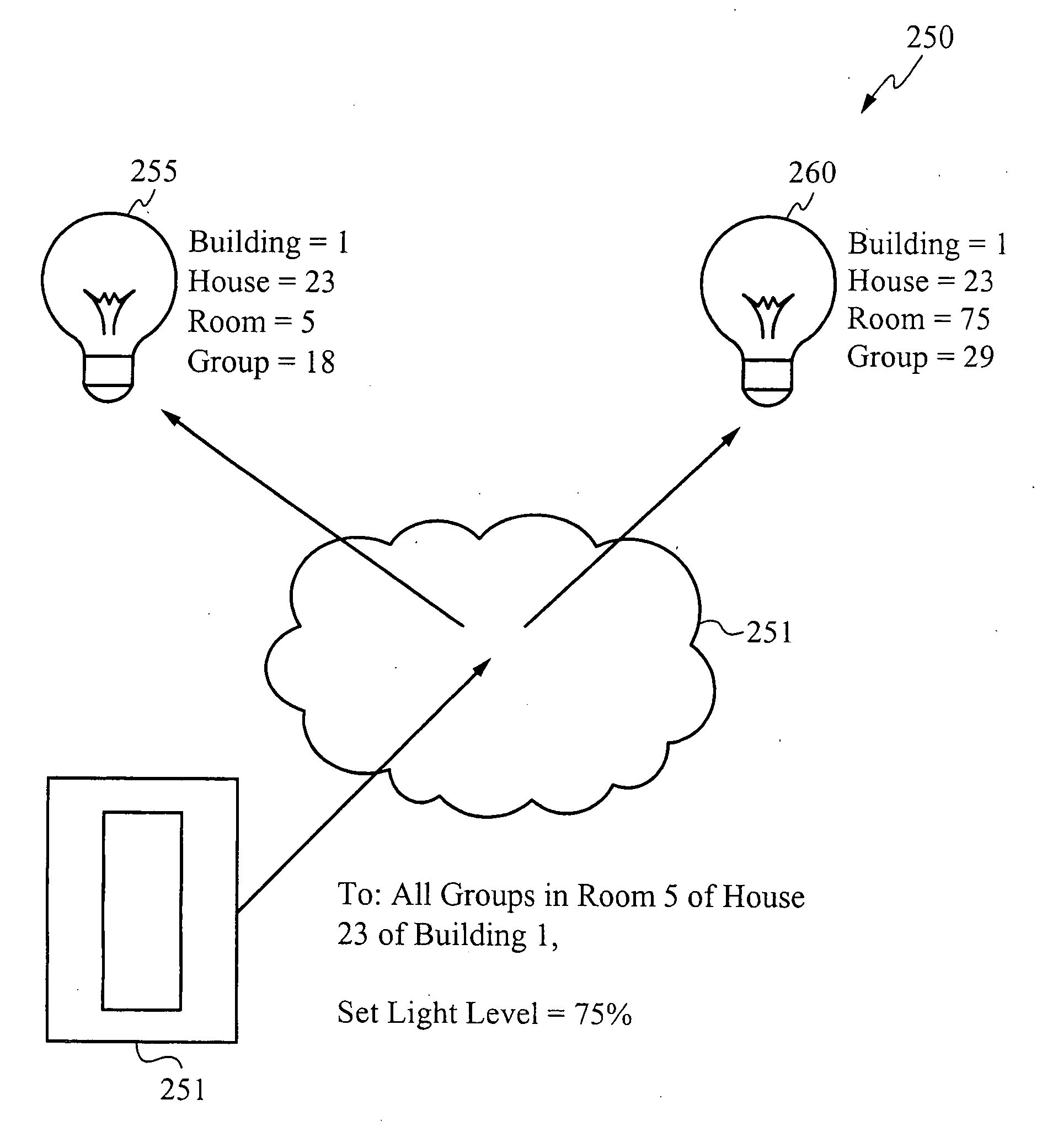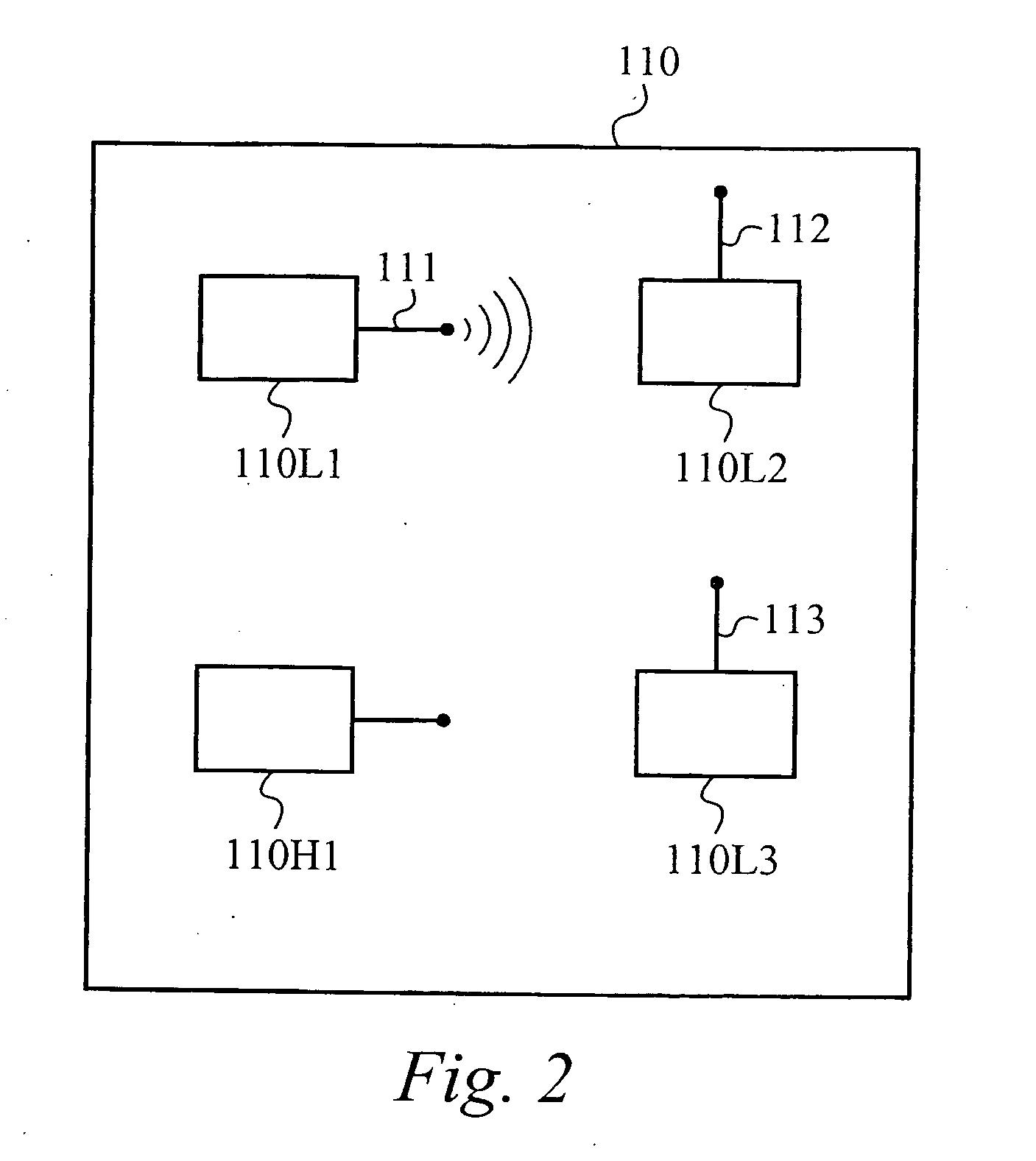Location-based addressing lighting and environmental control system, device and method
a technology of lighting and environmental control and location-based address, which is applied in the direction of data switching networks, digital transmission, transmission, etc., can solve the problems of system difficulty in maintenance, system scale not good, time-consuming process, etc., and achieve the effect of reducing traffic and efficient control of devices
- Summary
- Abstract
- Description
- Claims
- Application Information
AI Technical Summary
Benefits of technology
Problems solved by technology
Method used
Image
Examples
Embodiment Construction
[0038]To facilitate the clarity of the ensuing description, words listed below have been ascribed the following meanings:
1) LOCATION—A position in a spatial environment, as commonly defined by the planner or user of that environment. Generally, a location is specified, for completeness, in a hierarchical manner that serves to uniquely define the position, for example, as the “main conference room on the third floor of the main building”. For most applications, a location corresponds to a place on, or section of, a building floor plan. For each location, there are often others that, by relation, are less or more specific than it, corresponding to higher or lower levels in the hierarchy; in the foregoing example, a less-specific location is the entire “third floor of the main building”, while a more specific example might be the “speaker's podium of the main conference room on the third floor of the main building”.
2) LOCATION DESCRIPTOR (“LD”)—An n-tuple that encodes a location, gener...
PUM
 Login to View More
Login to View More Abstract
Description
Claims
Application Information
 Login to View More
Login to View More - R&D
- Intellectual Property
- Life Sciences
- Materials
- Tech Scout
- Unparalleled Data Quality
- Higher Quality Content
- 60% Fewer Hallucinations
Browse by: Latest US Patents, China's latest patents, Technical Efficacy Thesaurus, Application Domain, Technology Topic, Popular Technical Reports.
© 2025 PatSnap. All rights reserved.Legal|Privacy policy|Modern Slavery Act Transparency Statement|Sitemap|About US| Contact US: help@patsnap.com



